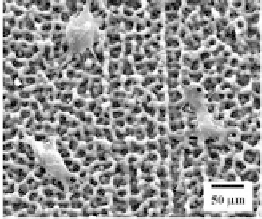Biomedical Engineering Reference
In-Depth Information
researchers [15, 26, 30, 31, 58]. Reducing the danger of inlammations
and avoiding the need for repeat surgery by using temporary,
biodegradable metallic implants and at the same time capitalizing
on their good mechanical strength is, indeed, a very attractive
possibility. Many groups worldwide have rapidly moved into this
area. Despite some problems with biotoxicity of certain alloying
elements, structural Mg alloys have been used in biocompatibility
tests, both
in vitro
and
in vivo
. Clinical tests have demonstrated
the viability of Mg alloys as stent implant materials. Recent results
supported by the published work suggest, however, that
in vivo
tests are indispensable already at this stage, as biocompatibility
of Mg alloys
in vitro
does not fully represent what happens
in vivo
[15, 58].
Recent work has demonstrated that bulk grain reinement
techniques, such as equal-channel angular pressing, are potent tools
to improve the fatigue strength and the bio-corrosion resistance of
common structural Mg alloys [55]. We are exploring the ways to
further improve the properties of Mg based alloys and make them it
for applications in bioresorbable implants.
However, bulk grain reinement may be insuficient to bring the
bio-corrosion rate down to the levels required by the clinical needs.
A natural way to contain corrosion of Mg and achieve controllable
corrosion rates is by surface modiication, particularly through
smart coating design. For example, corrosion of Mg alloys is retarded
markedly when a thin MgF
2
layer is formed on the surface in a
luoridation process. Furthermore, when a bioactive material, such
as hydroxyapatite, is deposited on top of the MgF
2
layer, both the
corrosion resistance and biocompatibility are enhanced signiicantly
(Fig. 13.11).
Figure 13.11
Coating layers of MgF
2
and hydrohyapatite (HA) on Mg
(left) and osteoblast cells attached on the surface of Mg
coated with MgF
2
and HA (right) [55].


















